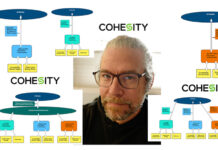Druva has added a cloud storage gateway to its AWS-based platform for data protection and management.
The data protection firm acquired the technology through the acquisition this month of Cloudlanes. It signalled its intention to buy the tiny Silicon Valley start-up last month when it announced it had raised $130m in fresh capital at a $1bn-plus valuation.
Druva positions itself as a kind of AWS cloud-based data vacuum cleaner, helping customers to reduce on-premises storage costs by sucking up stale data to the cloud where it can be managed and stored less expensively than on-premises in data centres, remote and branch offices and embedded systems.
With the Cloudlanes acquisition, Druva said it can provide instant recovery and better data security without needing any local hardware. The comapnycan also provide chain of custody and data verification capabilities and said this should appeal to regulated industries such as healthcare and banking.
Cloudlanes was founded in 2016 and obtained $5m in seed funding. It had reached $1m in bookings by acquisition time and co-founder Asif Moinuddin’s LInkedIn page talks about a $9m valuation increase.
It called its product a Cloud Backup Accelerator in 2017, boasting of 650MB/sec data transmission speed. The technology has been developed since then.
Cloudlanes
Cloudlanes runs as a virtual machine or in a bare metal server and presents itself as a storage target to backup applications. Data is kept on premises in a so-called Smart Cache for a few days and then transferred in the background to the cloud.
IT admins can use policy-based management to determine the duration of stay on-premises, and features include cloud auto-tiering and guaranteed master data copies in the cloud.
Data is transmitted to the cloud in a compressed state at speeds of up to 80TB/day per CloudLanes instance. That’s 3.333TB/hour and our maths says that’s 926MB/sec.
More than one way to skin a cat
It’s interesting to contrast Druva’s approach with WANdisco and its replication technology. WANdisco this week announced a joint development deal with an unnamed cloud service provider to build on its Fusion replication technology and replicate primary data to the public cloud.
The aim here is to provide a cloud on-ramp for primary data while the Druva+Cloudlanes pitch is to leave fresh backed-up primary data on-premises and squirt older, staler data to the cloud.
For Druva the backup software is the data selector and front-end delivery processor, with CloudLanes as the data mover, while WANdisco’s replication is used directly by applications without front end backup software.
The end result is similar with both approaches: fast access to local data and efficient transmission of data to the cloud.








